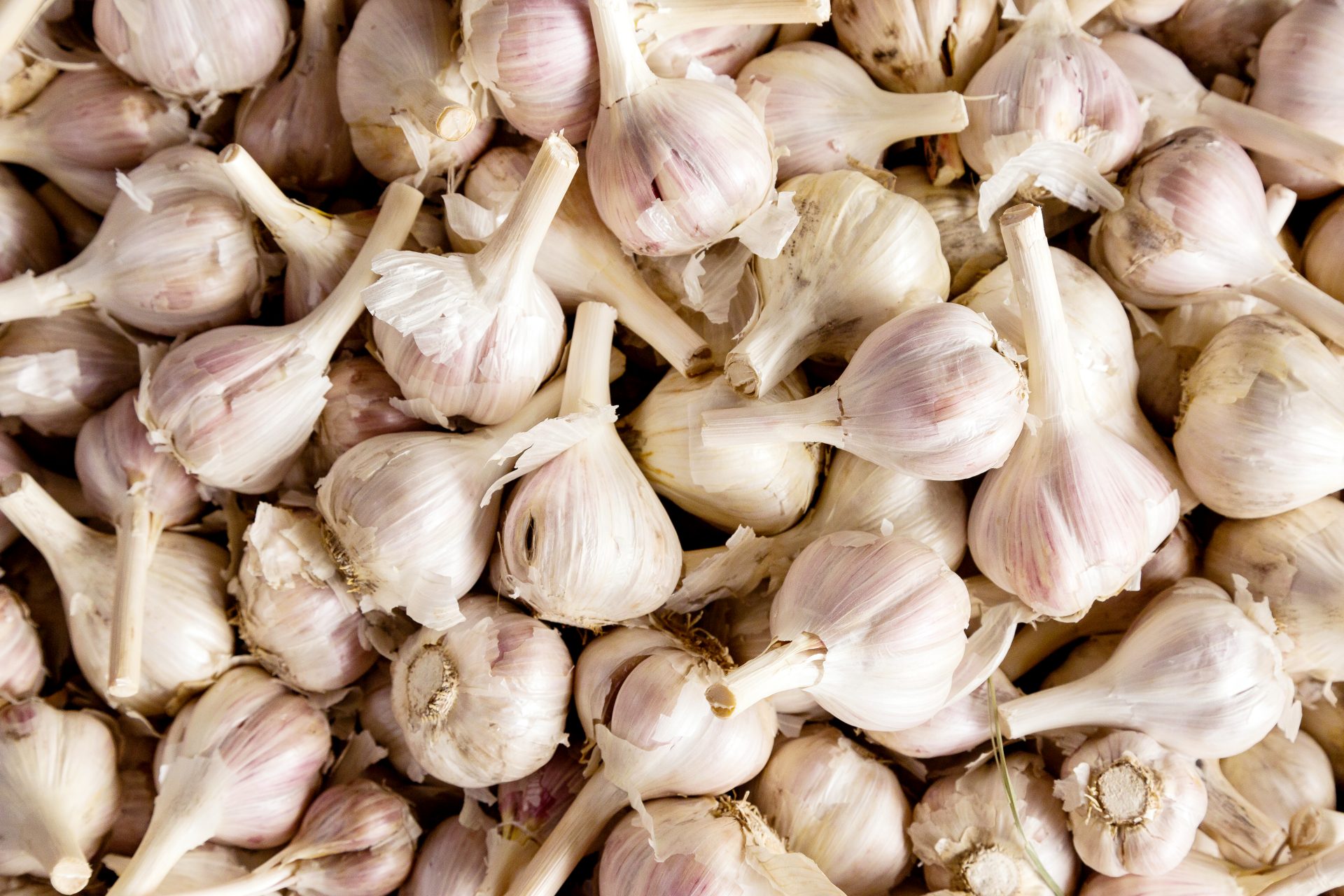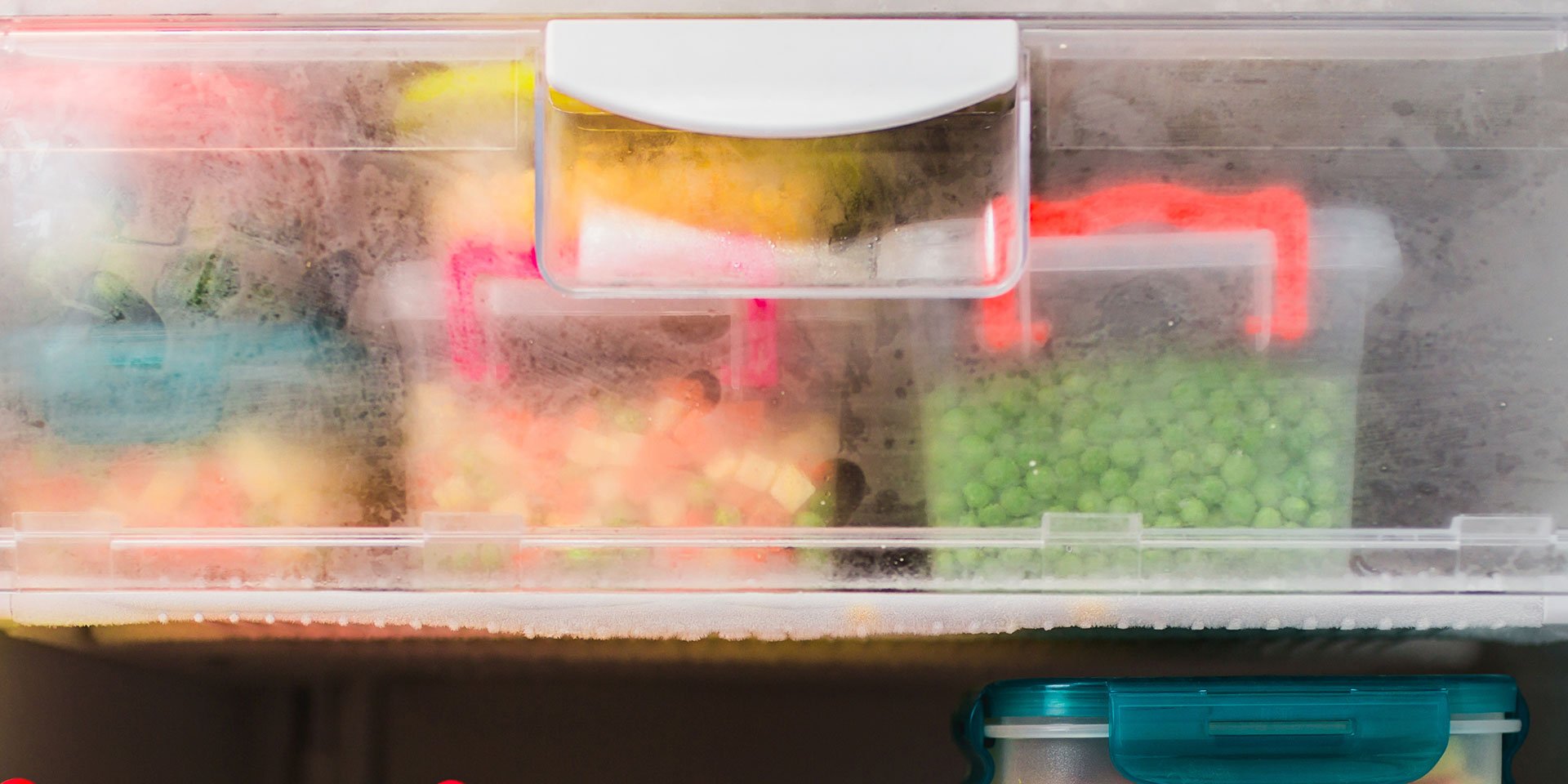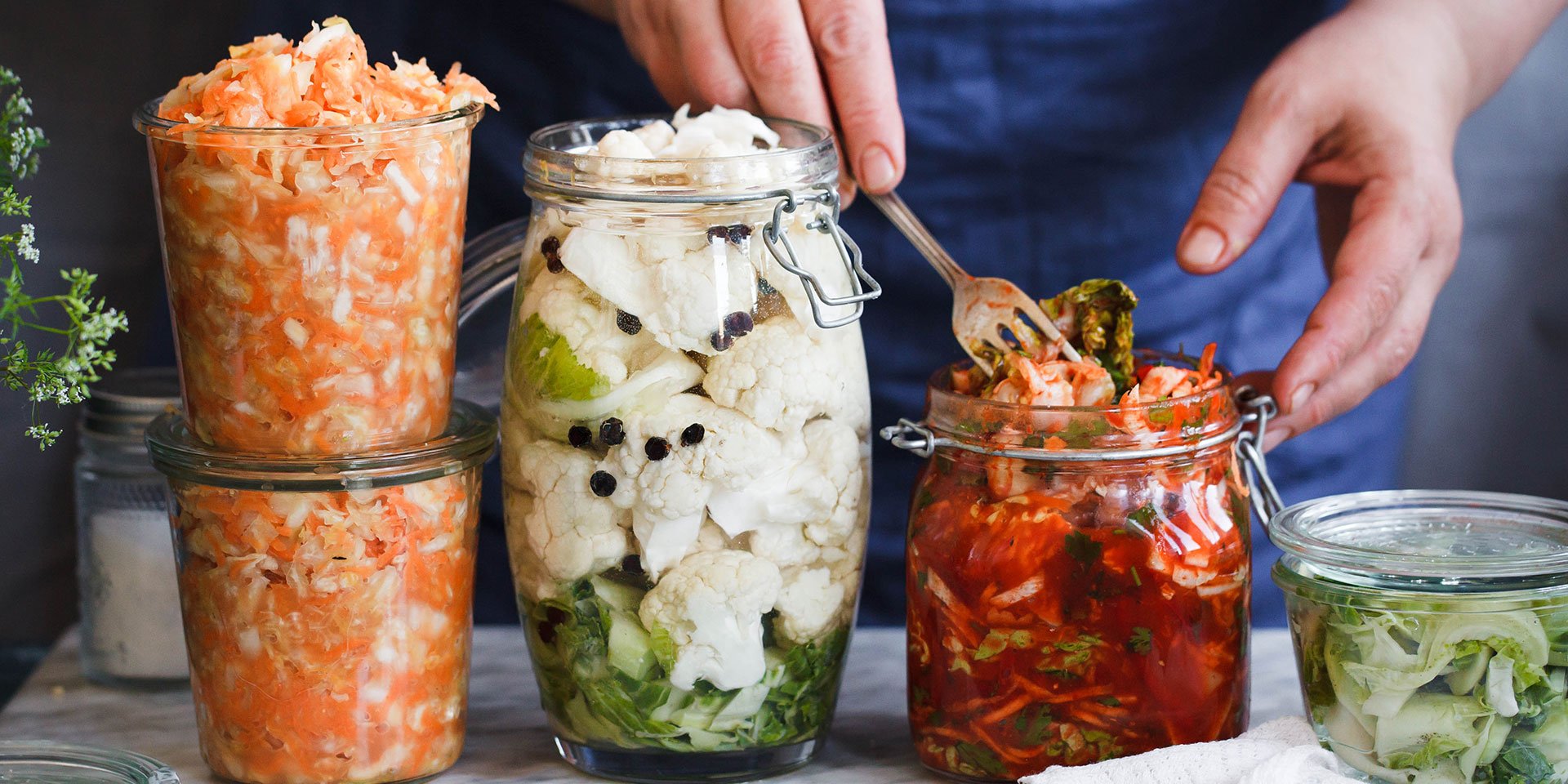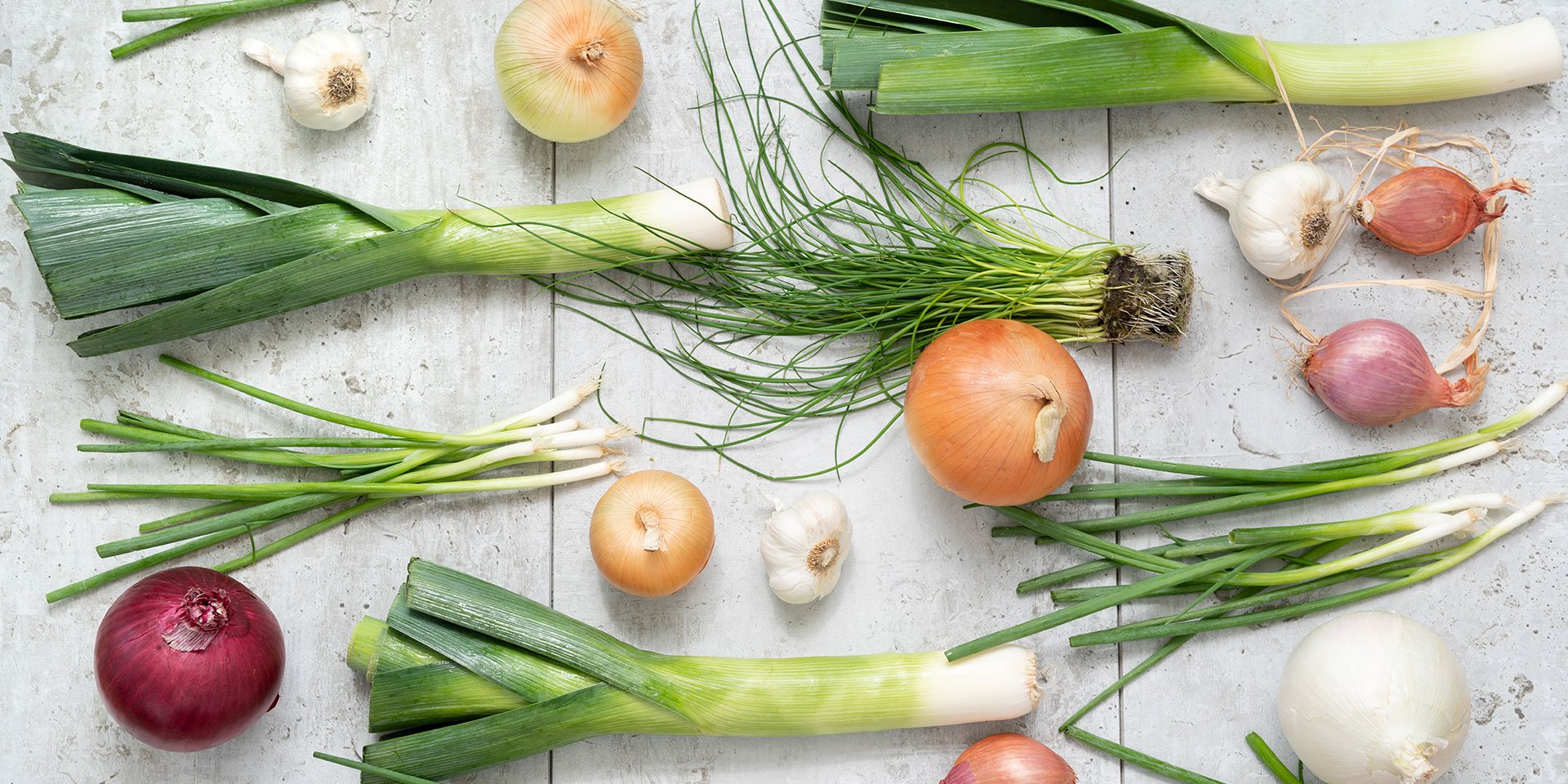Leftover garlic? Our tips to use every clove
Are you so afraid of running out of garlic that you buy it on every single grocery run — only to discover you already have a bulb (or three) stashed away at home? Or perhaps you find yourself sucked in by the elegant piles of giraffe-necked garlic on display at your local farmers’ market, and load up your tote with more garlic than imaginable uses for it. Thankfully the “stinking rose” is a versatile, useful and generally longlasting little veg, one that’s comfortable playing a wide variety of roles, both lead and supporting. So if you’ve got a LOT of garlic and you’ve run out of ideas beyond the usual applications of garlic bread and vampire repellent, read on for our suggestions for how best to store it, preserve it and use it up.
How to buy, store and prep garlic
To buy and store
There are hundreds of varieties of this pungent allium, generally divided into two main groups: hardneck and softneck. (A third, elephant garlic, is a mellow, large-bulbed allium which, according to Ohio State University Extension, “is actually not a true garlic, but more closely related to leeks.”) Hardnecks have long, elegant necks and are the types that yield garlic scapes, often one of the first tasty harbingers of spring. Softnecks have a longer shelf-life and are the ones you’re most likely you see at the supermarket.
At the farmers’ market, you’ll find varieties of all three — with evocative names like Brown Tempest, Music and Georgian Fire (hardnecks); Texas Rose and Viola Francese (softnecks); Giant garlic and French garlic (elephant) — typically making their appearance in mid to late summer and early fall.
Regardless of type, when buying garlic, look for taut-skinned bulbs with plump cloves. The head should feel firm in hand — if the skin collapses when pressed under thumb, and the cloves within are shriveled and shrunken, move on: That garlic is past its prime. That said, it won’t harm you to use garlic in this state (for example, if you find a neglected head in your pantry), it just may have off or slightly bitter flavors. Ignore the old wives’ tale about avoiding garlic cloves that have sprouted or formed a green inner germ; they’re perfectly safe to use, sprouts and all, they may just taste a little different. You really only need to toss garlic that has gone soft or moldy; otherwise, simply cut out any brown spots and use as intended. (There are plenty of good uses for past-its-prime garlic, including roasting the heads or adding whole cloves to soups or stews. Or plant it!) For best results, store garlic in a dark, cool, dry place for up to six months.
To prep
In most cases, you’ll need to peel the garlic before using. For small quantities, like a few cloves, place the cloves flat side down on a cutting board and gently smash with the side of a chef’s knife. That should break the clove and release its juices, loosening the skin and making the clove easy to peel.
For large quantities, such as multiple heads at once, there are a variety of peeling methods — each of which has its loyal adherents. There’s the bowl-shaking hack that went viral back in 2011, the microwave hack and the stabbing-knife hack (NB: when food writer Helen Rosner tested this for a “New Yorker” article in 2019, she ended up with five stitches on her middle finger). Each has its merits and can help you process a whole mess of cloves quickly.
How to preserve garlic
Cube it
Ice cube, that is. Finely chop peeled garlic and divide it between the wells of an ice cube tray (a silicone tray with a lid works great for this because it keeps odors in and makes the cubes easy to pop out). Add a little olive oil, if you wish, to make the cubes easier to remove. Let the cubes freeze solid for a few hours, then remove them from the tray(s) and transfer to a freezer bag or airtight container. Label the bag or container with the date. Now you’ll have pre-portioned fresh garlic on hand to use whenever you need it — you can drop the cubes directly into sauces and so on, or melt/saute them in a pan first.
Ferment it
By aging garlic at a consistent temperature and humidity level over a long stretch of time, you can make black garlic — garlic that has fermented via the Maillard reaction — into a mellower, softer, chewier version of its raw self. Black garlic is a traditional ingredient in many Asian cuisines, and it is said to have health benefits as well. There are more and less involved ways to make this umami-bomb ingredient and none of them is difficult (though they are time consuming): Our favorites are the slow-/rice-cooker method and the dehydrator method. Once the garlic is fermented, it can be mashed into a paste that will keep in the fridge. Or try mashing it into hummus and aioli; blending it into marinades, vinaigrettes, and sauces; smearing it onto crostini or adding it to deviled eggs.
Smoke it
Smoking garlic not only lends a campfire flavor to the familiar allium, but it also extends its life: Smoked garlic can be stored in the fridge for a week or two. Smear the cloves on bread or add them to tomato- or cream-based pasta sauces. Use whole heads to stuff a chicken before roasting (or try tucking some into James Beard’s famous recipe for Chicken with 40 Garlic Cloves). Some recipes call for using a smoker or pellet grill, but you can also use a regular charcoal or gas grill — as directed in grill expert/cookbook author Steven Raichlen’s genius recipe for Parm-flecked, smoke-roasted garlic herb butter.
Pickle it
Pickling garlic is a versatile, bold-flavor way to use up a lot of it at once. In pickling expert Marisa McClellan’s simple recipe, she shares a brilliant blanching tip for quickly peeling a big batch of cloves, and she uses a vinegary brine to make sure the canning liquid is sufficiently acidic. Alternatively, try this quick-pickled method, which yields puckery cloves that keep in the fridge. Whichever type you try, don’t forget that the brine is magic in a bottle: It can add layers of flavor to salad dressing, marinade, a bloody Mary or even a martini.
Powder it
Don’t ditch those peels! They can easily be turned into garlic powder or salt. Try this technique, adapted from “Low Waste Kitchen” by Alessandro Vitale (aka Spicy Moustache): Wash and completely dry the peels, then bake them on a sheet pan in a preheated 325 F oven for about five minutes, until they’re dried out and crispy. Once cool, pulverize them in a food processor until they form a fine powder; add salt and pepper to taste (or not at all). The powder/salt will keep in a cool, dry place for a few months.
Make black garlic oil (mayu)
Your nonna may have cautioned against burning garlic: “Careful — it’ll be bitter and ruin your sauce!” If so, she wasn’t wrong, but she also wasn’t entirely right — she may not have heard of mayu, a Japanese black garlic oil that’s a common condiment for ramen. The black garlic here is not fermented (see above) but minced and then slowly scorched black — the “slowly” being a crucial instruction. According to this recipe from J. Kenji López-Alt, you want the garlic cooked to a dirt-dark brown-black, but not burnt to a crisp. Lisa Kitahara at Okonomi Kitchen recommends freezing mayu to preserve its freshness and prevent bacterial growth (otherwise, it will keep in the fridge for a couple of days); she also recommends trying the oil on fried rice, avocado toast and crispy tofu in addition to the more traditional tonkatsu ramen.
Cooking with garlic
Garlicky white sauces
Cool, creamy, with a punchy raw garlic heat, these white sauces are delicious foils for grilled vegetables, falafels and bean burgers, chunky vegetable salads, fish filets and composed grain bowls. Try making homemade aioli (just don’t call it mayo!), lemony tarator (aka shawarma sauce), toum (a fluffy Lebanese garlic sauce that can use three to four heads of garlic) and cucumber- and dill-flecked tzatziki.
Then there’s bagna cauda, Italian for “hot bath,” a Piemontese fondue-like dish that does double duty as a sauce and a dip. It’s garlicky, briny (thanks to anchovies), and creamy (sometimes literally — certain recipes call for cooking the garlic cloves in milk or cream), and it is traditionally served with raw and blanched vegetables.
Beyond garlic bread
Garlic bread is a pizza night staple. In the event you don’t have your own favorite recipe, Ina Garten has a great one that will consume a handful of garlic cloves at a time – more if you’re cooking for a crowd. (Feel free to play around with the basic template by topping with chopped sun-dried tomatoes, olives, or slices of fresh mozzarella; you get the idea …). But there are variations on this theme that are well worth adding to your rotation — and that can use up any stray garlic cloves you might have sitting around.
In the height of summer, grab the plumpest, gorgeous-est tomatoes you can find, chop them and toss with minced garlic, torn fresh basil, flaky salt and your best extra-virgin olive oil. Let the mixture macerate for a bit, then pile it onto freshly toasted crusty bread (for more garlic oomph, rub the surface of the toast with a peeled garlic clove). Some folks say to add red wine or balsamic vinegar (blasphemers!); others say it’s a sin to salt the tomatoes beforehand (believing it draws out too much of their juices). You do you.
For a Spanish take on garlicky, tomato-y bread — one that can accommodate off-season tomatoes if that’s all you’ve got — try pan con tomate (or its Catalan variant, pan amb tomaquet). This dish also has endless permutations, but one basic formula is toasted crusty bread rubbed with a raw garlic clove and the cut side of a halved tomato. (Some Catalonian versions skip the garlic — also worth a try.) And then there’s the tomatoless take that FoodPrint’s director, Jerusha Klemperer, swears by: Andy Baraghani’s vinegar toast. Pan-fried, garlic-rubbed crusty bread topped with vinegary minced fresh herbs is like the tastiest salad on the tastiest bread..
Garlicky pastas
Pasta is often the first thing that comes to mind when thinking of uses for garlic, and with good reason — garlic adds an essential, ineffable quality to so many red sauces and pestos. But when you have a lot of garlic on hand, why not make it the main attraction? Spaghetti all’aglio e olio (literally, spaghetti with garlic and oil) is the ur garlic pasta: Al dente strands slicked with an emulsion of garlicky best-quality olive oil and pasta water (the trick, some say, is cooking the spaghetti in the sauce for the last few minutes). All’aglio is a prime example of cucina povera cooking, and as such, has many variations. Experiment until you find the one you like (hey, you’ve got a lot of garlic anyway, right?).
Another garlicky classic that’s similar in its simplicity, where the quality of the ingredients is central to the quality of the dish, is spaghetti alle vongole (i.e., spaghetti with clam sauce). Though the recipe originated in Naples and purists might call for vongole veraci (“true clams”), there are as many variations of the dish as there are clams in the sea. (And sadly, the supple little vongole veraci are in danger, so use another small clam, such as Manila, or whichever sustainable clams you can source.) Feel free to add tomatoes and chiles (alla Calabrese), butter and lemon or even substitute canned clams.
Pungent soups and elixirs
Listen, some of us really love garlic — and for those who do, garlic soup distills that fragrant goodness into liquid gold. A hot bowl of creamy garlic soup could be just the thing on a chilly, rainy night, or a cold bowl of ajo blanco, white gazpacho, could be all the AC you need on a scorching summer’s day. For something hearty, try sopa de ajo, a Basque garlic soup that, in this take from “Food and Wine,” uses an entire head of garlic; it could be the vinegar-y, pimenton-flecked love child of pappa al pomodoro and egg drop soup.
We’d be remiss to skip one of the reasons garlic is so beloved: It has numerous health benefits and has been a home remedy across multiple cultures since time immemorial. If you’re under the weather and have lots of garlic on hand, try Sohla El-Waylly’s garlic soup (“You will feel better after you have this,” she says). Or make fire cider, an incendiary folk recipe popularized by the herbalist Rosemary Gladstar. The concoction calls for infusing apple cider vinegar with raw garlic, chiles, fresh horseradish and other flavorful ingredients. Whether or not it will actually cure what ails you, it is tasty and bracing!
Get the latest food news, from FoodPrint.
By subscribing to communications from FoodPrint, you are agreeing to receive emails from us. We promise not to email you too often or sell your information.
Top photo by Moving Moment/Adobe Stock.
More Reading
Simple ways to turn kitchen scraps into delicious soups
December 23, 2025
4 Tips for Stretching Your Food Dollars
April 16, 2025
How to use extra onions
April 9, 2025
For lessons in thrifty, climate-friendly cooking, look to vintage cookbooks
March 10, 2025
Fermenting and freezing are your secret weapons for preserving root vegetables
October 17, 2024
Resources to help you pickle, ferment, jam, can and more
October 16, 2024
Quinces are due for a renaissance
September 16, 2024
How can we cut food waste in half by 2030?
September 5, 2024
9 homemade preserves to gift (or keep) this holiday season
December 12, 2023




